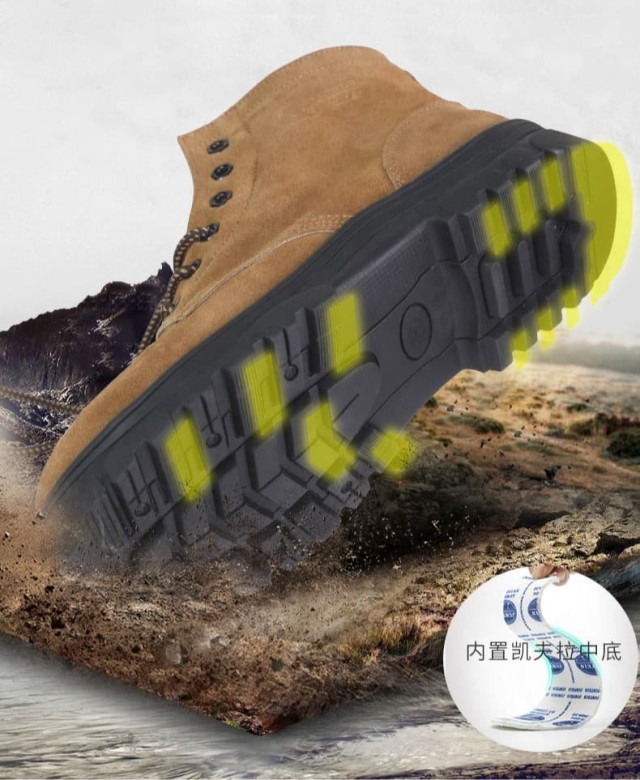Selecting the right safety footwear isn't just about compliance—it's about creating a safer, more productive work environment. Whether you're navigating electrical hazards, slippery floors, or long shifts, the right boots can reduce injuries, combat fatigue, and even cut operational costs.
Why Safety Footwear Matters Beyond Basic Protection
Matching Hazards to Footwear Design
Not all workplace risks are the same, and neither are safety shoes. Here’s how to align footwear features with common hazards:
- Electrical Hazards: Boots with EH (Electrical Hazard) ratings insulate against shocks up to 600 volts in dry conditions. Composite toe caps (non-metallic) are ideal here, as they don’t conduct electricity like steel toes. (ASTM F2413-2005 standard).
- Slips and Falls: Slip-resistant outsoles with high friction coefficients outperform in greasy or wet environments, critical for food processing or healthcare. Independent tests show these soles maintain grip even on oily surfaces.
- Impact/Crush Risks: Steel or composite toes meet ASTM F2412-2005 for impact protection. Composite options are lighter and better for cold weather.
Tip: Prioritize boots with markings like "EH" or "SR" (Slip Resistant) to match your worksite’s specific dangers.
Balancing Safety and Comfort for Long-Term Wear
A boot that’s protective but uncomfortable leads to fatigue—and compliance issues. Key comfort features:
- Weight: Composite toes reduce weight by ~30% compared to steel, easing leg strain over 10-hour shifts.
- Fit: Poorly fitted boots cause blisters and instability. Measure feet annually and try boots with adjustable lacing or padded collars.
- Climate Adaptability: Waterproof membranes (e.g., Gore-Tex) suit outdoor work, while breathable linings prevent sweat buildup in kitchens.
Did you know? Workers in ill-fitting safety shoes are nearly twice as likely to report foot pain, lowering productivity.
How the Right Footwear Enhances Workplace Productivity
Reducing Fatigue Through Ergonomic Design
Fatigue isn’t just discomfort—it slows reaction times and increases error rates. Ergonomically designed boots address this by:
- Shock Absorption: Midsoles with cushioning (like polyurethane) reduce joint impact on concrete floors.
- Arch Support: Proper support aligns posture, reducing back pain. Look for boots with contoured footbeds.
- Flexibility: Composite materials allow natural foot movement, unlike rigid steel toes.
Case in point: A food plant reduced worker fatigue complaints by 40% after switching to lightweight, slip-resistant boots.
Cost Savings from Fewer Injuries and Higher Efficiency
Investing in quality safety footwear pays off:
- Injury Prevention: Slip-resistant shoes can cut fall-related injuries by over 50% in high-risk industries like warehousing.
- Durability: Boots with reinforced stitching and abrasion-resistant materials last 2–3x longer, reducing replacement costs.
- Compliance: Proper EH-rated footwear avoids OSHA fines (up to $15,000 per violation) and downtime from accidents.
Pro tip: Calculate ROI by comparing boot costs against potential injury expenses (e.g., workers’ compensation claims).
Ready to Equip Your Team with the Right Protection?
3515 partners with distributors and bulk buyers to deliver safety footwear tailored to your industry’s risks—from electrical hazards to slippery floors. Our range combines certified protection with ergonomic designs to keep workers safe and productive. Contact us today to discuss custom solutions for your workforce.
Key Takeaways:
- Match boot features (EH, SR, toe type) to your workplace hazards.
- Prioritize comfort to reduce fatigue and improve compliance.
- Quality footwear lowers long-term costs via injury prevention and durability.
Products You Might Be Looking For:
View steel toe safety boots for impact protection
Explore customizable safety footwear for workplace hazards
Related Products
- Wholesale Customizable Suede Safety Boots - Puncture-Proof with Velcro Closure
- Wholesale Durable Camo Canvas Shoes with High-Traction Rubber Soles
- Puncture-Resistant Velcro Safety Boots for Wholesale & Custom Manufacturing
- Customizable Anti-Smash Safety Boots for Wholesale & Private Label Manufacturing
- Wholesale Safety Footwear Manufacturer for Bulk & Custom OEM Orders
Related Articles
- How to Extend Work Boot Lifespan: Science-Backed Care for Safety & Savings
- How to Choose Work Boot Materials for Maximum Safety and Durability
- Work Boots vs. Western Boots: How to Choose the Right Footwear for Labor Safety
- How to Choose Work Boots That Match Your Job's Safety Demands
- How to Choose Work Boots That Balance Safety, Comfort, and Durability for Your Job



















